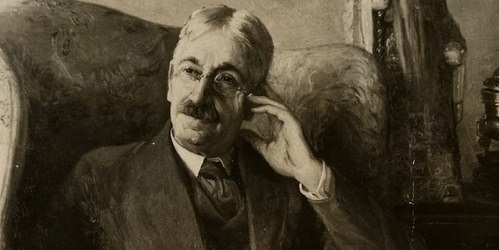
For at least two millennia, western civilization has utilized certain means and ends as conducive to education. Nevertheless, at the beginning of the 20th century, a group of educational theorists and reformers were dissatisfied with the state and methods of education in the United States. Led by philosopher John Dewey, the group suggested that prevailing educational methods were overly regimented, lacked individualized instruction, neglected to educate the “whole child”, and were not pragmatic in nature. John Dewey stated, “The purpose of education is to enhance individual effectiveness in society and give learners practical knowledge and problem-solving skills.”
This school of educational progressivism was based on an optimistic view of human nature and found its philosophical roots in the thinking of Jean-Jacques Rousseau, Friedrich Froebel, Johann Pestalozzi, and William James. As a result of the efforts of these reformers, educational methods and goals in the United States have been subject to a program of ongoing revision since the early 1900s. Our nation (along with many others) has been experimenting on a grand scale with both the means and the ends of education. As the results of this experimentation accumulated, alarm bells rang.
Many commentators expressed concern, one of them being Dorothy Sayers, who in 1947 penned her essay “The Lost Tools of Learning”. In her essay, Ms. Sayers reminded us that children today learn in the same ways they’ve always learned; and that it might not be a bad idea to turn to our educational forefathers for information on how to educate them. She advocated a return to the methods of the middle ages and the seven liberal arts of ancient education contained in the Trivium and the Quadrivium (discussed below).
The word “Trivium” is a Latin word meaning “three roads” or “three ways”. It originally referred to a preparatory program of generalized education. In the late 20th century, the word gained currency in the United States as a description of three stages of learning in the life of a child. This was due in no small part to the essay by Ms. Sayers. The first stage she called the Grammar stage – which refers to early learning where the memorization of facts comes easily and the child is not yet ready for abstract thinking. During this stage, the “…master faculties are Observation and Memory.”
The Quadrivium was composed of the four remaining classic liberal arts: arithmetic, geometry, music, and astronomy. In medieval times, these were the specializations that were taught to students already possessed of the generalized education and a well-ordered mind.
Many years later, the essay by Ms. Sayers was read by Douglas Wilson, who was motivated in 1981 to found, along with several others, Logos School in Moscow, Idaho. The idea behind Logos was to implement the classical model of education described by Ms. Sayers. In 1991, Mr. Wilson wrote a book entitled, “Recovering the Lost Tools of Learning”. The book was read widely among Christians and generated new efforts in Christian education across the United States. The book also presents the earliest usage of the term “Classical Education” in its current context of which we are aware.
Today, the term “classical education” broadly refers to the time-honored means and ends of education. While the term is used with some variation, two almost universal features are a focus on ancient languages, usually either Latin or Greek, and the organization of primary and secondary education around the stages of the Trivium. Latin and Greek are seen by classical educators as having many benefits including the production of an orderly mind. Classical educators also frequently utilize the disciplines of formal logic for training in sound thinking, great literary masterpieces for discovery of what it means to be human, and rhetoric for effective expression.
Classical education also frequently espouses a different end than contemporary education. In contrast to the pragmatism and vocational training purpose of contemporary education, classical education reclaims education for education’s sake. In the words of Russell Kirk, “The primary purpose of a liberal education…is the cultivation of the person’s own intellect and imagination, for the person’s own sake…genuine education is something higher than an instrument of public policy. True education is meant to develop the individual human being, the person, rather than to serve the state.”
For further information on this subject, please visit the Recommended Reading page in this section of this website.